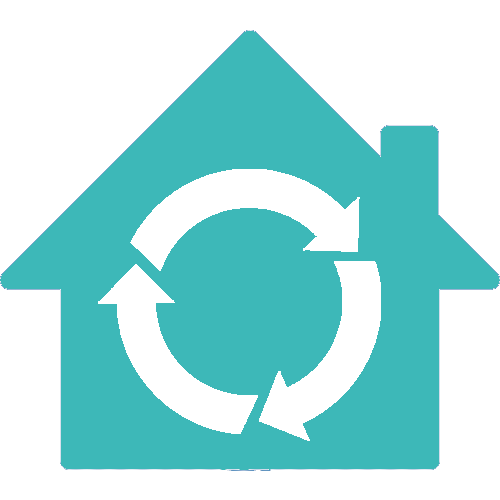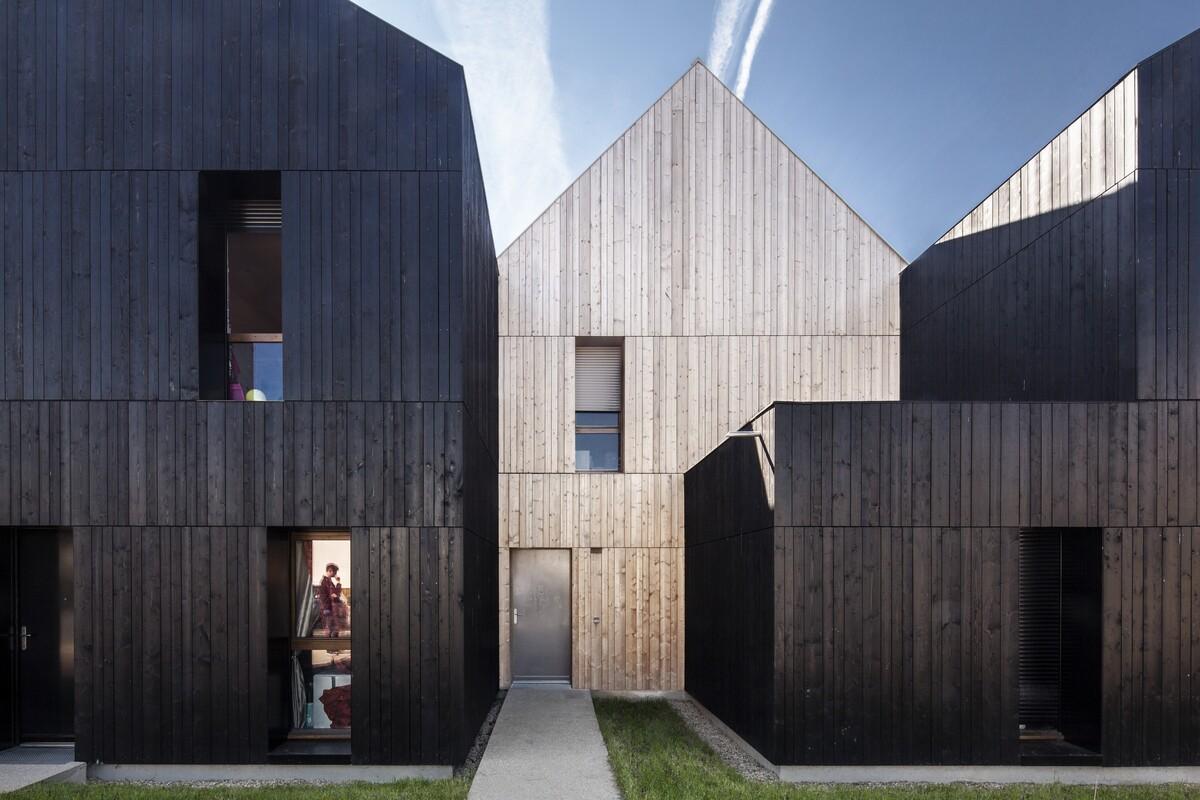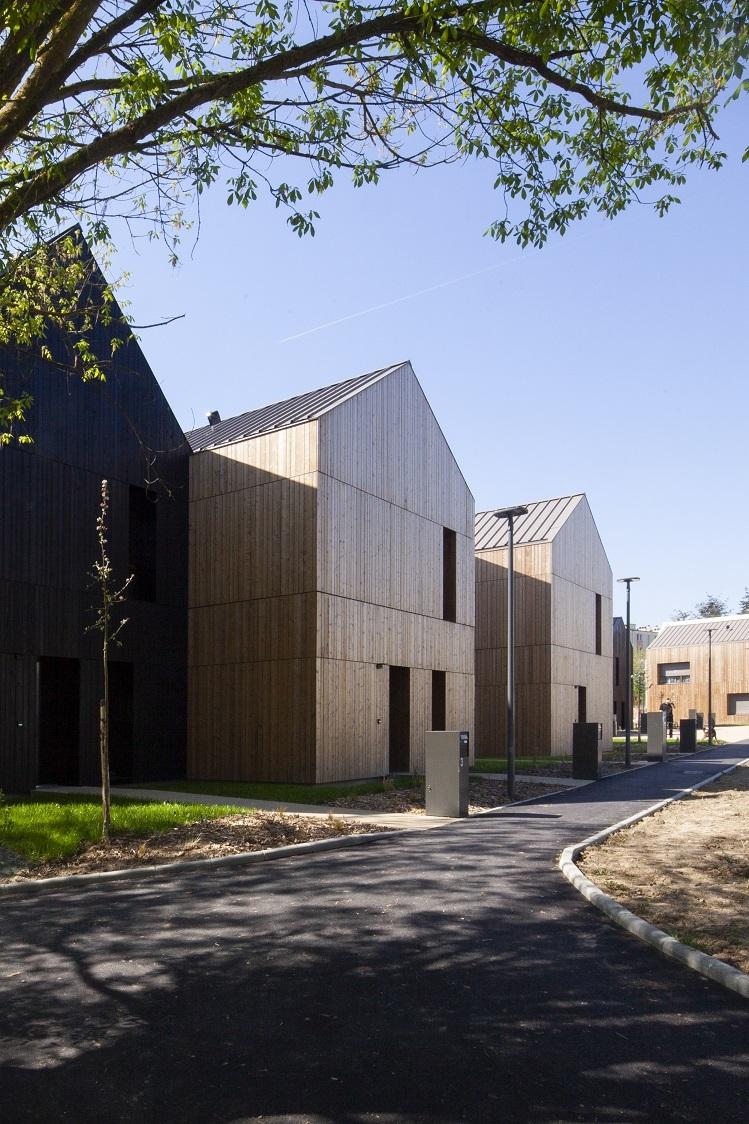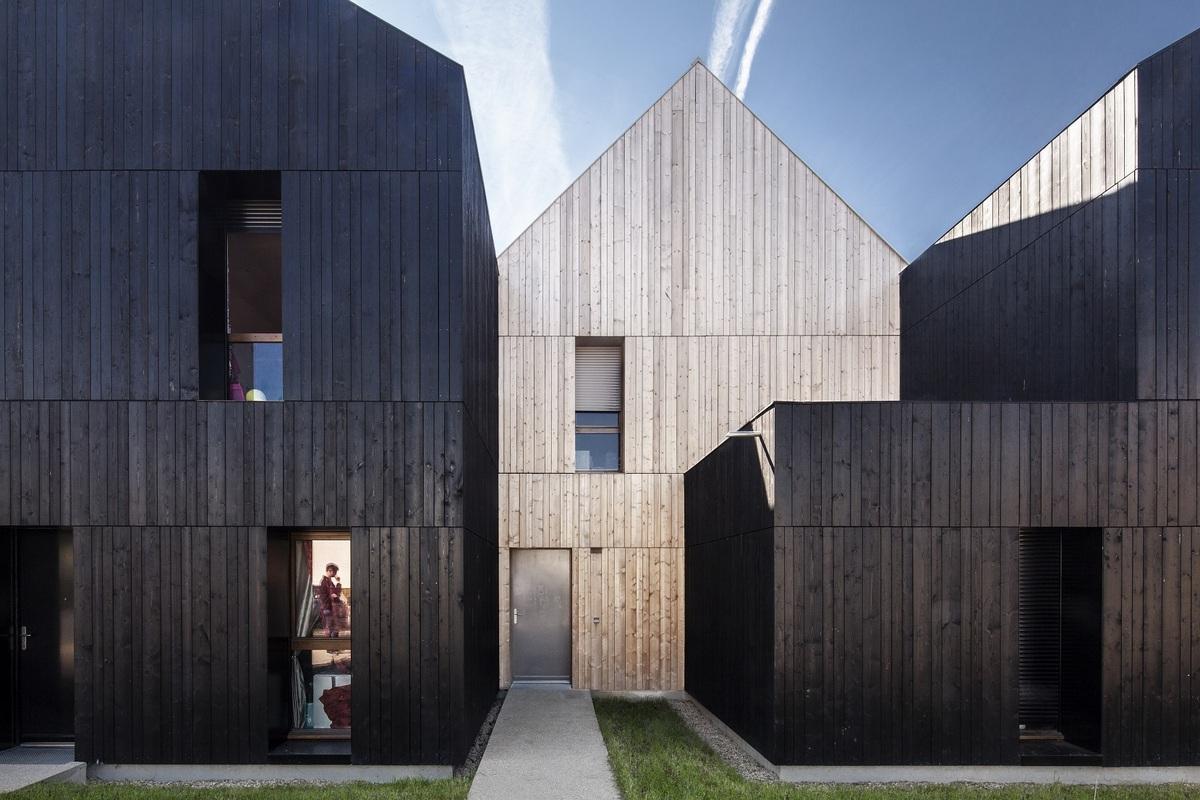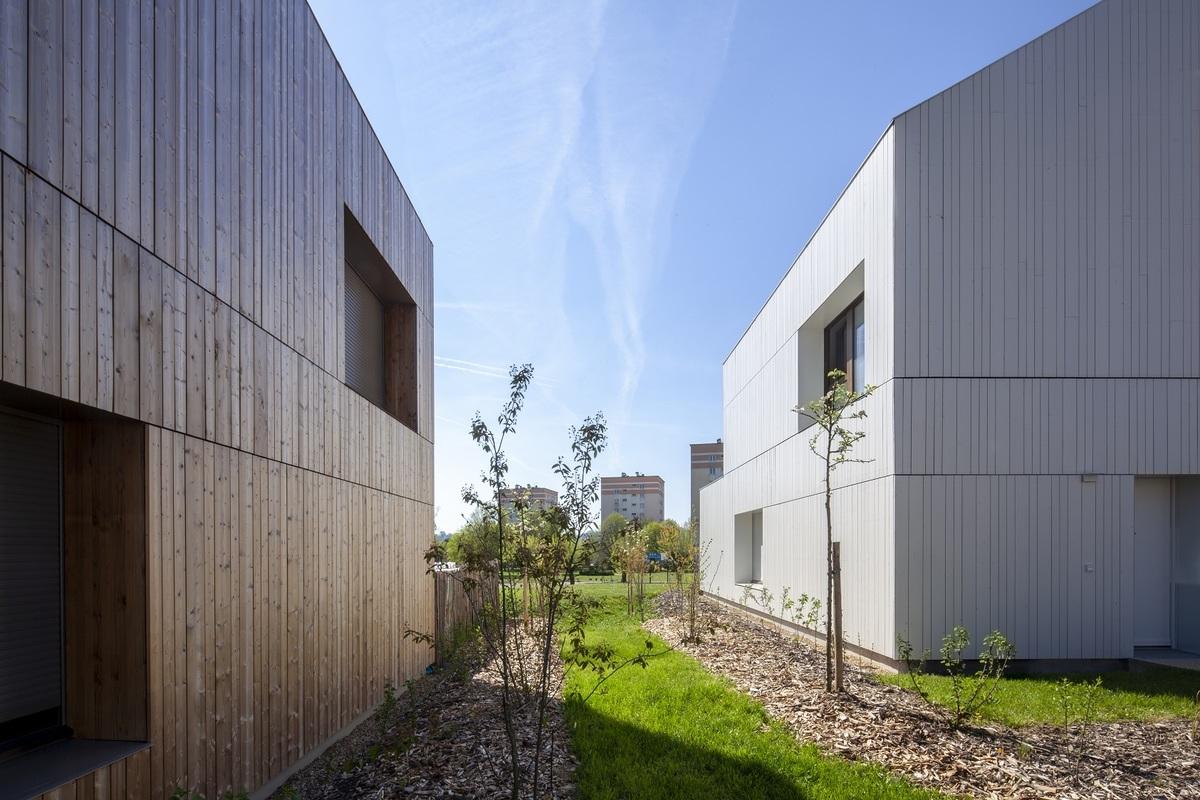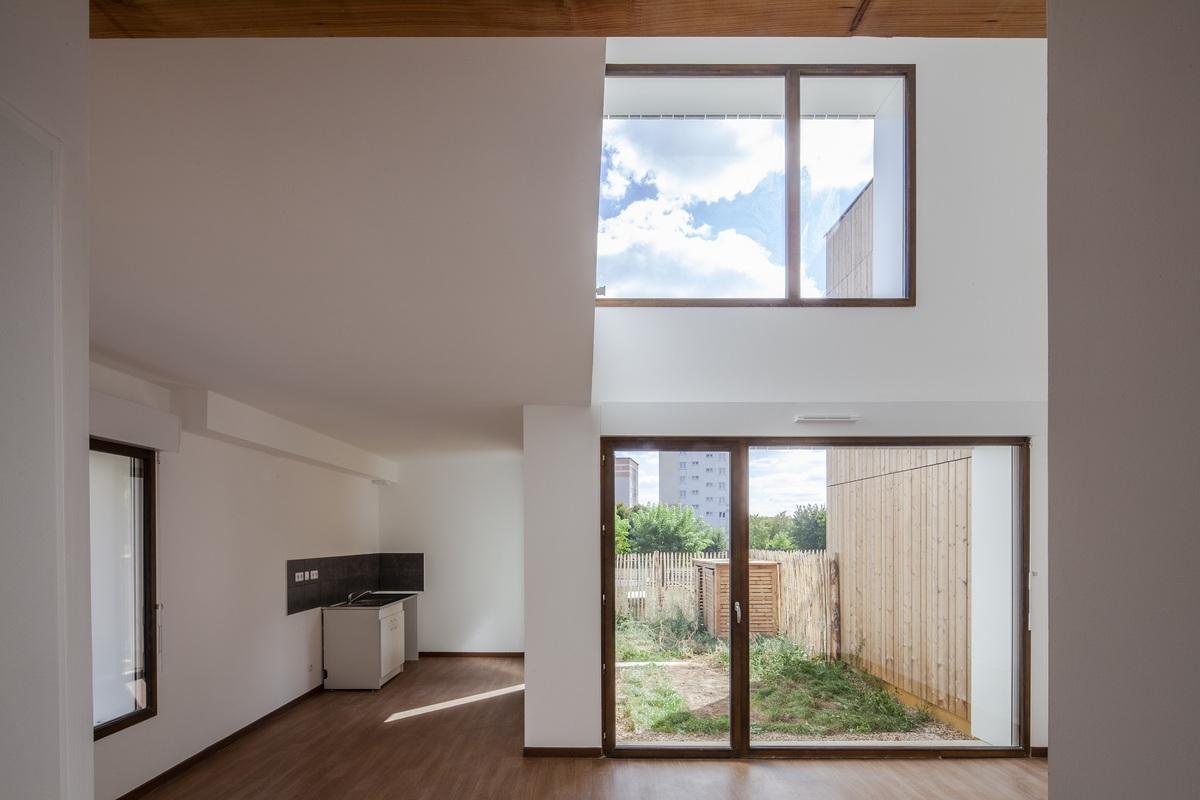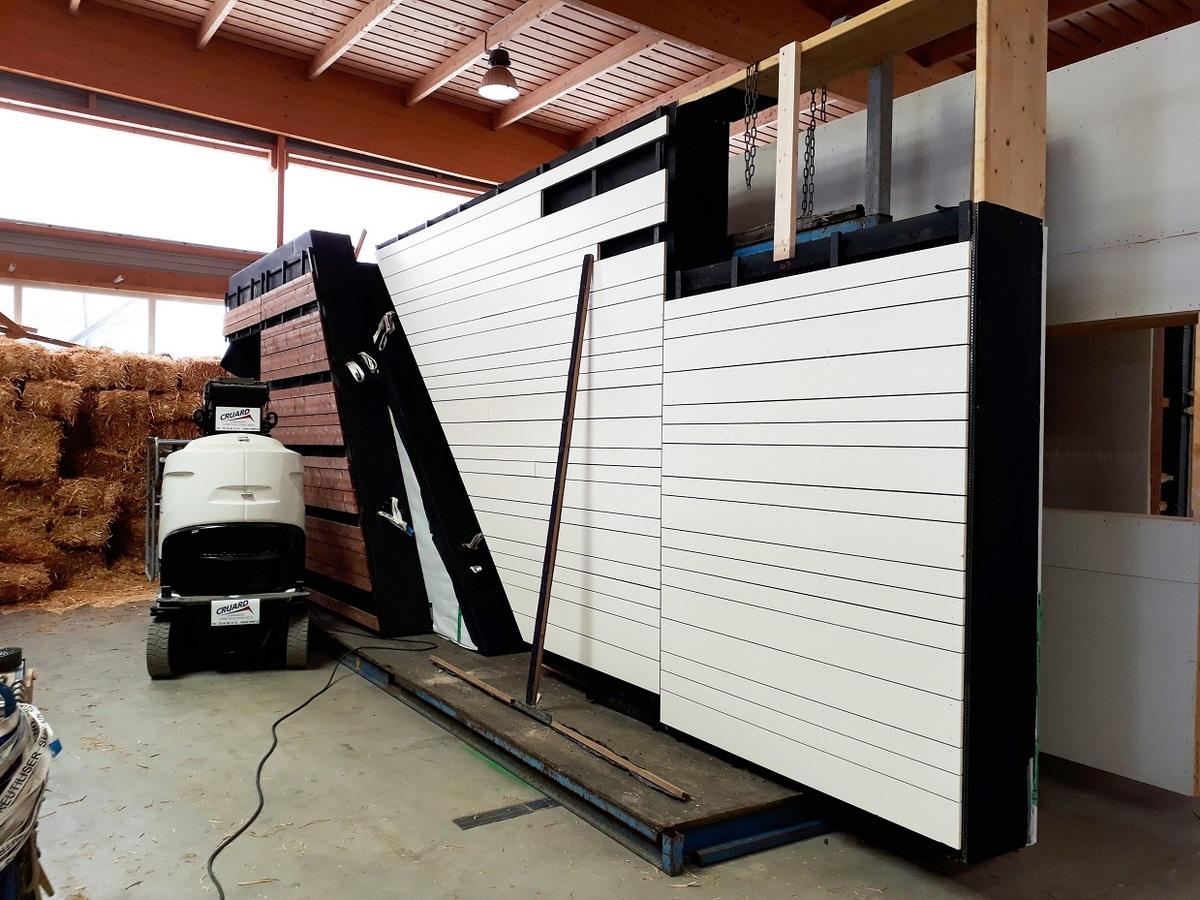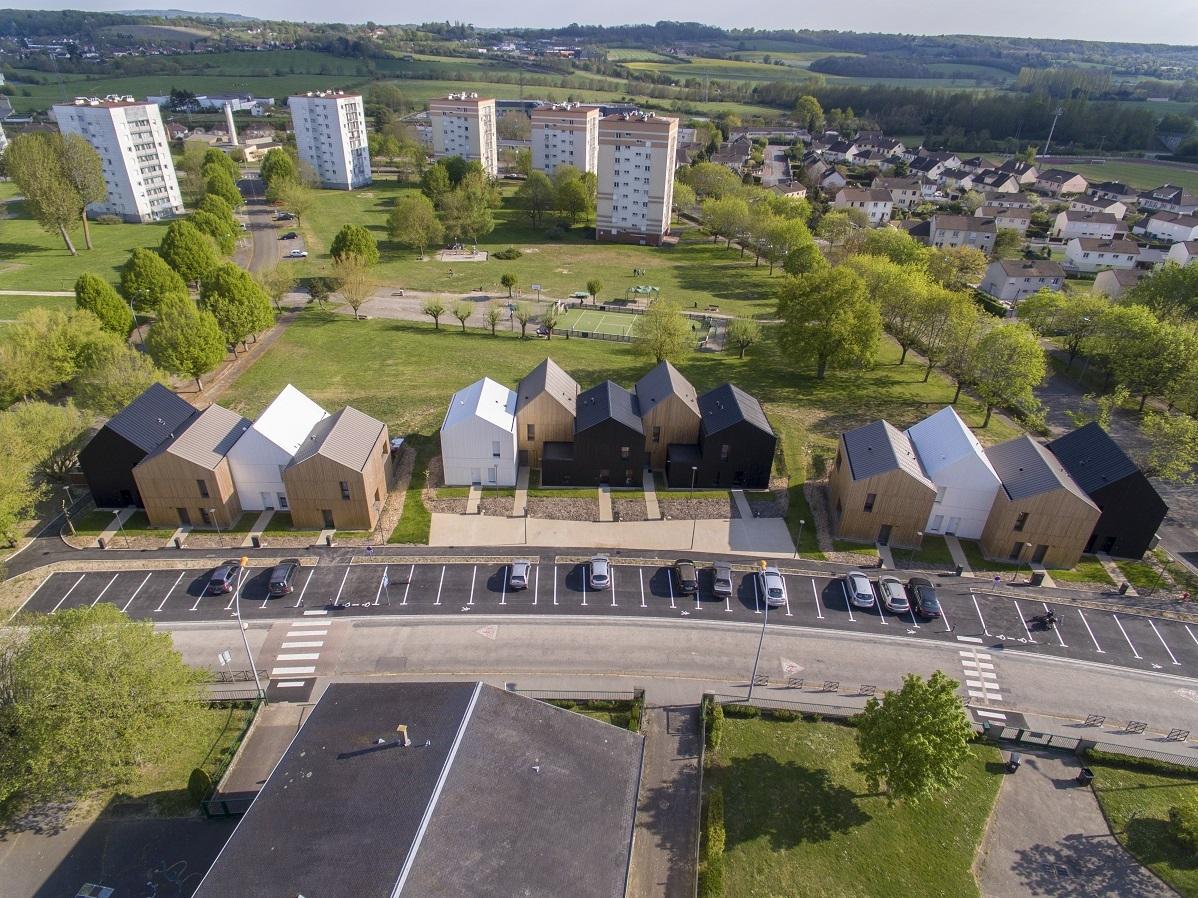13 straw wood housing
Last modified by the author on 10/06/2020 - 15:29
New Construction
- Building Type : Terraced Individual housing
- Construction Year : 2018
- Delivery year : 2019
- Address 1 - street : Rue Paul Langevin 28400 NOGENT LE ROTROU, France
- Climate zone : [Cfb] Marine Mild Winter, warm summer, no dry season.
- Net Floor Area : 1 330 m2
- Construction/refurbishment cost : 1 620 000 €
- Number of Dwelling : 13 Dwelling
- Cost/m2 : 1218.05 €/m2
-
Primary energy need
54 kWhep/m2.an
(Calculation method : RT 2012 )
The construction of these houses follows the destruction of a buildings bar of 65 homes demolished in 2014 and takes part in the rehabilitation of an entire district (construction of the Pôle childhood youth, rehabilitation of the Gauchetières shopping center, etc.). For the lessor, Nogent Perche Habitat, the target thermal performance aims to reduce the weight of the heating costs for the tenants who will live there.
Sustainable development approach of the project owner
For the landlord, the target thermal performance aims to reduce the weight of the heating costs for the tenants who will live there.Architectural description
The challenge of the project was not to recreate a built front but to create different rhythms and to remain open on the site. By creating these "openings" from the street, the houses are grouped together by module, called "plots" of 4 to 5 houses (3 plots: A, B and C). Plots A and C are identical, mirrored. Plot B, central, is positioned slightly back from A and C, in order to allow a requalification of the pedestrian strip which is located between the school car parks and the future houses. This setback also allows breakthroughs not only to the south but also diagonally and protects the houses from proximity to the street. The houses are staggered in order to avoid the repetition undergone by too harsh alignments. The decline of one in two houses creates private green spaces and limits the creation of fences. Alternating ridge heights also vary the silhouette and energize it.
See more details about this project
https://www.envirobatcentre.com/media/309Photo credit
Juan Sepulveda Grazioli (except nzi-6.jpg = NZI Architects)
Contractor
Construction Manager
Energy consumption
- 54,00 kWhep/m2.an
- 80,00 kWhep/m2.an
Systems
- Electric radiator
- Heat pump
- No cooling system
- Humidity sensitive Air Handling Unit (Hygro B
- No renewable energy systems
Urban environment
Product
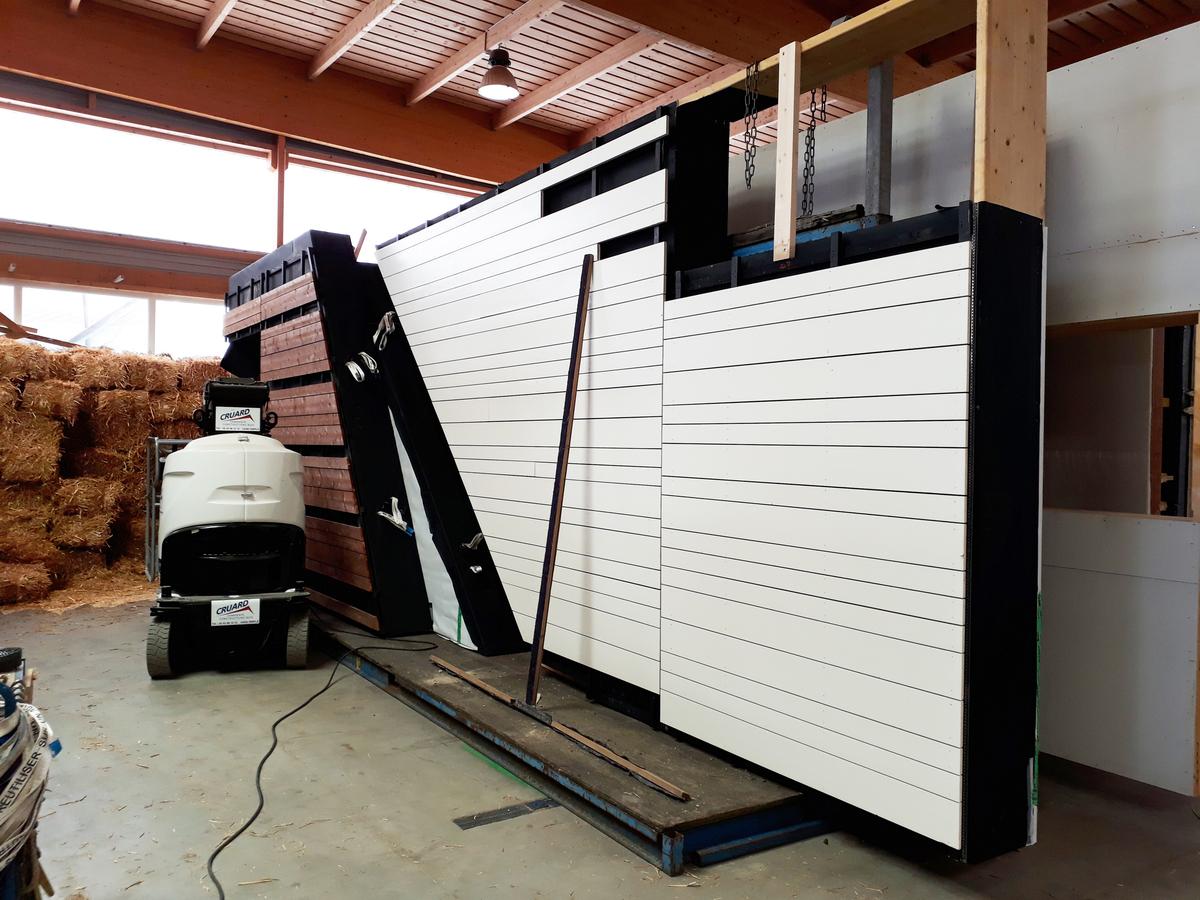 https://cruard-charpente.com/realisation/
https://cruard-charpente.com/realisation/Gros œuvre / Structure, maçonnerie, façade
70% of the envelope for this project was built in the workshop. Site nuisances have been considerably reduced. The site is clean, dry, and not very noisy. The construction was carried out between local crafts and industrialization, thus favoring local dry sectors.
The advantage of wood-straw construction over traditional framework and timber frame walls lies in the possibility of complete prefabrication of the wall and of producing large wall surfaces in the factory. The assembly line does not need a very powerful overhead crane and the panels can be easily handled on site with light lifting gear.
Good acceptance.
Construction and exploitation costs
- 1 620 000 €
Life Cycle Analysis
Reasons for participating in the competition(s)
The operation consists in the realization of 13 grouped individual dwellings in Nogent-le-Rotrou in wood frame insulated with straw.
The use of biosourced materials manufactured by solar energy and made up essentially of carbon from the atmosphere leads to a Favorable Balance.
The orientation of the units and the size of the bays maximize the solar gain from the south while protecting them from loss to the north, thereby reducing the energy needs of the units.
The construction time has also been considerably reduced by prefabrication in the factory and the use of straw and wood from the Perche territory, in a logic of short circuit, has further limited energy consumption.
Building candidate in the category
